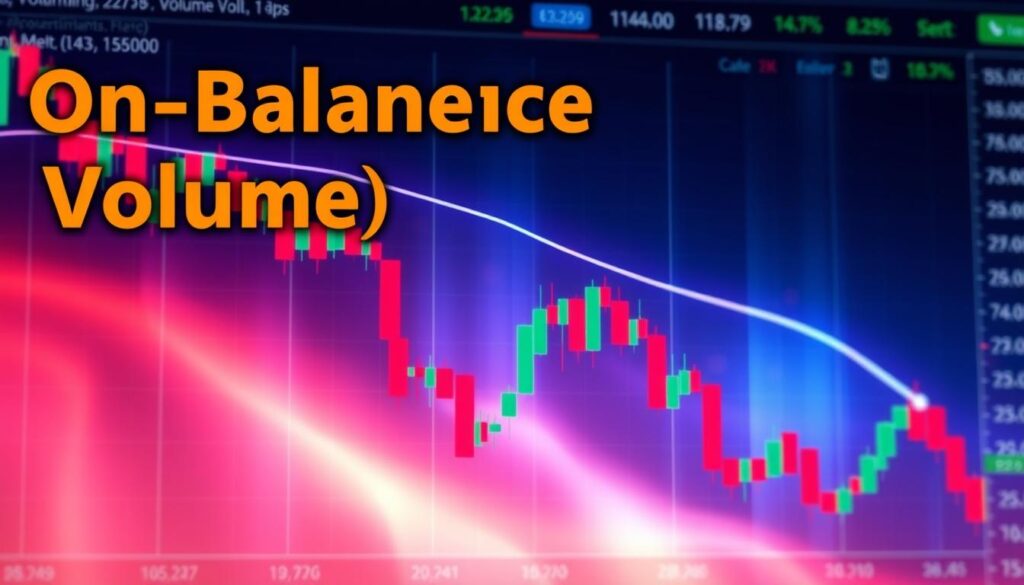The On-Balance Volume (OBV) indicator is a technical analysis tool used to predict changes in stock prices based on volume flow. Developed by Joseph Granville in 1963, the OBV indicator is a leading indicator that provides insights into crowd sentiment, predicting bullish or bearish outcomes based on volume trends. The OBV indicator compares relative action between price bars and volume flow to generate actionable signals, different from traditional volume histograms. By analyzing the On-Balance Volume indicator, traders can identify ideal entry and exit price levels for trading activities, as it measures buying and selling pressure in the market.
The OBV indicator is a cumulative indicator, with the actual numerical value being less relevant than the pattern of movement over time. It is a technical indicator of momentum that uses volume changes to make price predictions. By tracking the cumulative total of a currency pair’s volume, with adjustments made based on whether the closing price is higher, lower, or equal to the previous day’s closing price, traders can gain insights into market momentum and potential reversals. The On-Balance Volume indicator is a valuable tool for traders, as it provides insights into whether the volume is flowing into or out of the market, indicating the relative strength of buyers or sellers.
Table of Contents
Key Takeaways
- The On-Balance Volume (OBV) indicator is a technical analysis tool used to predict changes in stock prices based on volume flow.
- The OBV indicator provides insights into crowd sentiment, predicting bullish or bearish outcomes based on volume trends.
- The OBV indicator is a leading indicator that measures buying and selling pressure in the market.
- Traders can use the OBV indicator to identify ideal entry and exit price levels for trading activities.
- The OBV indicator is a cumulative indicator, with the actual numerical value being less relevant than the pattern of movement over time.
- The OBV indicator can be used in conjunction with other technical indicators to form a comprehensive trading strategy.
Understanding the On-Balance Volume Indicator in Trading
The On-Balance Volume (OBV) indicator is a technical analysis tool that measures the volume flow of an asset, providing insights into market sentiment and potential price movements. By analyzing the volume trend relative to price changes, traders can identify trends and potential reversals, making informed decisions about their investments.
Smart money and retail investors alike use the OBV indicator to gauge the strength of a trend, as it takes into account the cumulative buying and selling pressure. The OBV formula calculates the daily volume by adding or subtracting the day’s volume based on the closing price compared to the previous day, allowing traders to monitor the interplay between volume and trend.
Some key points to consider when using the OBV indicator include:
- Increasing volume often precedes an uptrend, while decreasing volume can indicate a downtrend.
- Divergence between OBV and price trend can signal an impending change in trend.
- Changes in volume can be leading indicators of price changes in stocks.
By understanding the principles of the OBV indicator and its application in trading, investors can make more informed decisions and stay ahead of the market. Whether you’re a seasoned trader or just starting out, the OBV indicator is a valuable tool to have in your arsenal, providing insights into market sentiment and potential price movements.
| Indicator | Description |
|---|---|
| OBV Trendline | Used to identify trends and potential reversals |
| OBV Divergence | Signals an impending change in trend |
| OBV Breakout | Indicates a potential price movement |
Core Components of the OBV Indicator
The On-Balance Volume (OBV) indicator is a technical analysis tool that helps traders identify trends and predict price movements by analyzing the price-volume relationship. At its core, the OBV indicator is calculated by adding the day’s volume to a cumulative total on up days and subtracting it on down days, resulting in a cumulative volume that reflects the flow of money into or out of a security.
The OBV line is a visual representation of this cumulative volume, and its movement and slope are used to identify trends and potential breakouts. Traders analyze the OBV line to identify upward trends when both price and OBV make higher peaks and higher troughs, and downward trends when both price and OBV make lower peaks and lower troughs.
Some key points to consider when using the OBV indicator include:
- Positive values are recorded when today’s price exceeds the previous day’s closing price
- Negative values are recorded when today’s price is below yesterday’s closing price
- The OBV indicator uses volume flow to predict stock price changes
- Traders use OBV for trend confirmations, trend reversals, and identifying oversold and overbought markets
The following table summarizes the key components of the OBV indicator:
| Component | Description |
|---|---|
| OBV Line | A visual representation of the cumulative volume |
| Price-Volume Relationship | The relationship between the security’s price and trading volume |
| Cumulative Volume | The total volume of the security over a given period |
Setting Up Your OBV Indicator
To start using the On-Balance Volume (OBV) indicator, you need to set it up on your trading platform. This involves choosing the right trading software that offers technical analysis tools, including the OBV indicator. Most trading platforms, such as MetaTrader or TradingView, provide the OBV indicator as a standard tool.
Once you have selected your trading platform, you can add the OBV indicator to your chart. This is usually done by clicking on the “Indicators” or “Studies” section and selecting the OBV indicator from the list. You can then configure the OBV parameters, such as the time frame and sensitivity, to suit your trading strategy.
Configuring OBV Parameters
Configuring the OBV parameters is crucial to getting the most out of the indicator. You can adjust the time frame to suit your trading strategy, from short-term to long-term. You can also customize the visual settings, such as the color and style of the OBV line, to make it easier to read and interpret.
Customizing Visual Settings
Customizing the visual settings of the OBV indicator can help you to better understand the data and make more informed trading decisions. You can use chart customization options to change the appearance of the OBV line, such as the color, thickness, and style. You can also add other technical analysis tools, such as moving averages or trend lines, to your chart to provide additional context and insights.
By following these steps and using the right trading software and technical analysis tools, you can set up your OBV indicator and start using it to inform your trading decisions. Remember to always use chart customization options to make the most of your OBV indicator and to stay up-to-date with the latest market trends and analysis.
| Trading Platform | OBV Indicator | Chart Customization |
|---|---|---|
| MetaTrader | Yes | Yes |
| TradingView | Yes | Yes |
Reading OBV Signals Effectively
To effectively read On-Balance Volume (OBV) signals, it’s essential to understand the concept of trend confirmation and divergence. When the price and OBV are moving in the same direction, it’s a sign of trend confirmation, indicating that the current trend is likely to continue. On the other hand, when the price and OBV are moving in opposite directions, it’s a sign of divergence, which can be a potential indicator of a trend reversal.
OBV can also be used to identify potential breakouts. When the OBV is rising in a trading range, it may indicate accumulation and a potential upward breakout. Conversely, a falling OBV in a trading range may indicate distribution and a potential downward breakout. Volume interpretation is crucial in this context, as it helps traders understand the underlying buying and selling pressure.
Some key points to consider when reading OBV signals include:
- The direction of OBV is more important than its actual value
- A rising OBV in a trading range can indicate a potential upward breakout
- A falling OBV in a trading range can indicate a potential downward breakout
- Divergence between price and OBV can be a sign of a potential trend reversal
By understanding how to read OBV signals effectively, traders can gain valuable insights into market trends and make more informed trading decisions. Whether it’s identifying trend confirmation, divergence, or potential breakouts, OBV is a powerful tool that can help traders stay ahead of the curve.
Key Trading Strategies Using OBV
OBV trading strategies are designed to help traders make informed decisions based on trend analysis and price action. By analyzing the OBV indicator, traders can identify trends, spot divergences, and validate breakouts. One key strategy is to use OBV for trend confirmation, where a rising OBV line confirms an uptrend and a falling OBV line confirms a downtrend.
Another strategy is to look for divergences between the OBV line and price action. For example, if the price is making new highs but the OBV line is not, it may indicate a weakness in the trend. The following are some key points to consider when using OBV trading strategies:
- Use OBV to confirm trends and identify potential reversals
- Look for divergences between OBV and price action
- Validate breakouts using OBV and price action
By incorporating OBV trading strategies into their analysis, traders can gain a deeper understanding of market trends and make more informed decisions.
| Strategy | Description |
|---|---|
| Trend Confirmation | Use OBV to confirm trends and identify potential reversals |
| Divergence Trading | Look for divergences between OBV and price action to identify potential reversals |
| Breakout Validation | Use OBV and price action to validate breakouts and identify potential trading opportunities |
Combining OBV with Other Technical Indicators
To enhance trading decisions, it’s essential to combine the On-Balance Volume (OBV) indicator with other technical indicators, leveraging indicator synergy for more accurate predictions. This approach allows traders to confirm trends and identify potential reversals more effectively.
One common combination is pairing OBV with moving averages, which helps to smooth out price fluctuations and provide a clearer trend direction. Additionally, incorporating momentum indicators like RSI and MACD can offer insights into the strength and momentum of price movements, further refining trading strategies.
Some benefits of combining OBV with other indicators include:
- Improved trend confirmation
- Enhanced detection of divergences
- Increased accuracy in predicting price reversals
By integrating OBV with these indicators, traders can create a more comprehensive trading approach, ultimately leading to more informed and effective trading decisions.
Common OBV Pattern Analysis
On-balance volume (OBV) is a valuable tool for traders, helping them identify potential trend reversals and continuation patterns. By analyzing chart patterns, traders can gain insights into market trends and make informed decisions.
When using OBV, it’s essential to recognize bullish and bearish patterns. A bullish pattern can indicate a potential upward price movement, while a bearish pattern may suggest a downtrend. Neutral patterns can signal consolidation, where the price is stable, and no clear trend is emerging.
Bullish OBV Patterns
- Rising prices with increasing volume, indicating strong demand
- OBV diverging from price, signaling a potential trend reversal
- Continuation patterns, such as triangles or wedges, indicating a potential breakout
Bearish OBV Patterns
- Falling prices with increasing volume, indicating strong selling pressure
- OBV diverging from price, signaling a potential trend reversal
- Reversal patterns, such as head and shoulders, indicating a potential downtrend
By recognizing these patterns and understanding the relationship between OBV and price, traders can develop effective trading strategies and improve their chances of success in the market.
Risk Management When Trading with OBV
Effective risk management is crucial when trading with the On-Balance Volume (OBV) indicator. To minimize potential losses, traders must consider stop-loss placement, position sizing, and maintaining a favorable risk-reward ratio. By incorporating OBV into a robust risk management strategy, traders can better navigate the markets and make more informed decisions.
A key aspect of risk management is determining the optimal stop-loss placement. This can be achieved by analyzing OBV signals and identifying potential support or resistance levels. For example, if the OBV is rising along with the price, it may be a good idea to set a stop-loss below a recent support level. On the other hand, if the OBV is falling along with the price, a stop-loss above a recent resistance level may be more appropriate.
Another important consideration is position sizing. By adjusting the position size based on OBV signals, traders can manage their risk exposure and maximize potential gains. For instance, if the OBV is indicating a strong uptrend, a larger position size may be warranted. Conversely, if the OBV is indicating a weak downtrend, a smaller position size may be more prudent.
Ultimately, maintaining a favorable risk-reward ratio is essential for long-term trading success. By combining OBV with other technical indicators and fundamental analysis, traders can make more informed decisions and achieve a better balance between risk and reward. As Joseph Granville, the creator of the OBV indicator, once said, “The key to successful trading is to manage your risk and maximize your rewards.”
| Risk Management Strategy | OBV Signal | Stop-Loss Placement | Position Sizing |
|---|---|---|---|
| Conservative | Rising OBV | Below support level | Small |
| Aggressive | Falling OBV | Above resistance level | Large |
| Neutral | Neutral OBV | At recent high/low | Medium |
Advanced OBV Trading Techniques
For experienced traders, mastering advanced On-Balance Volume (OBV) strategies can significantly enhance their trading outcomes. One key technique involves analyzing timeframe confluence, where traders examine OBV across multiple timeframes to identify high-probability trade setups. This approach helps confirm trends and spot potential reversals by considering the broader market psychology.
By applying advanced OBV strategies, traders can gain a deeper understanding of market dynamics and make more informed decisions. Volume-price divergence strategies are particularly useful in this context, as they enable traders to identify complex divergence patterns and trade them effectively. A rising OBV line, for instance, can indicate positive volume pressure and potentially lead to higher prices.
Multiple Timeframe Analysis
This technique involves analyzing OBV across different timeframes, such as daily, weekly, and monthly charts. By doing so, traders can identify areas of timeframe confluence, where the OBV lines on multiple timeframes align to confirm a trend or signal a potential reversal.
Volume-Price Divergence Strategies
Traders can use volume-price divergence strategies to identify potential trend reversals. For example, if the price is making higher highs but the OBV line is making lower highs, it may indicate a bearish divergence and a potential sell signal. Conversely, if the price is making lower lows but the OBV line is making higher lows, it may indicate a bullish divergence and a potential buy signal.
By incorporating these advanced OBV strategies into their trading arsenal, traders can refine their market analysis and make more accurate predictions. As market psychology plays a significant role in shaping price movements, understanding timeframe confluence and volume-price divergence strategies can help traders stay ahead of the curve and capitalize on emerging trends.
Avoiding Common OBV Trading Mistakes
When using the On-Balance Volume (OBV) indicator, traders often fall into common pitfalls that can lead to false signals and significant losses. One of the primary mistakes is overtrading, which occurs when traders react to minor OBV movements without considering the broader market context. This can result in a series of small losses that add up over time.
To avoid confirmation bias, traders should combine the OBV indicator with other technical and fundamental analysis tools. This helps to validate the signals generated by the OBV and reduces the risk of misinterpreting the data. Additionally, traders should be aware of the potential for false signals when market volume experiences sharp increases due to unexpected announcements.
Some key strategies for avoiding common OBV trading mistakes include:
- Using the OBV indicator in conjunction with other technical analysis tools
- Avoiding overtrading by setting clear trading goals and risk management parameters
- Being aware of the potential for false signals and confirmation bias
By following these strategies and being mindful of the potential pitfalls, traders can use the OBV indicator to make more informed trading decisions and avoid common mistakes.
| Trading Strategy | Risk Management | Signal Validation |
|---|---|---|
| Combining OBV with other indicators | Setting clear trading goals and risk parameters | Validating signals with fundamental analysis |
| Avoiding overtrading | Using stop-loss orders and position sizing | Considering multiple timeframes and market contexts |
Real-World Trading Examples Using OBV
When it comes to applying the On-Balance Volume (OBV) indicator in real-world trading scenarios, practical application is key. By examining case studies and conducting thorough market analysis, traders can gain valuable insights into how OBV can inform their trading decisions.
In the stock market, for example, OBV can be used to identify trends and confirm breakouts. By analyzing changes in buying or selling daily volume, traders can make more informed decisions about entry and exit points. Similarly, in the cryptocurrency market, OBV can help traders identify potential market reversals by analyzing divergences between price movements and the indicator.
Here are some examples of how OBV can be used in different markets:
- Stock market: Identify trends and confirm breakouts
- Cryptocurrency market: Identify potential market reversals
- Forex market: Analyze divergences between price movements and OBV
By applying OBV in a practical application and conducting thorough market analysis, traders can gain a competitive edge in the markets. Whether through case studies or real-time analysis, OBV can provide valuable insights into market trends and trading opportunities.
| Market | OBV Application |
|---|---|
| Stock Market | Trend identification and breakout confirmation |
| Cryptocurrency Market | Identifying potential market reversals |
| Forex Market | Analyzing divergences between price movements and OBV |
Troubleshooting Your OBV Analysis
When working with the On-Balance Volume (OBV) indicator, it’s essential to be aware of its OBV limitations, such as sensitivity to large volume spikes. To account for these limitations, traders can focus on data accuracy by ensuring that their data sources are reliable and up-to-date. This can involve regularly checking for updates and verifying the accuracy of the data.
Another crucial aspect of troubleshooting OBV analysis is indicator optimization. This involves adjusting the settings of the OBV indicator to suit the specific market conditions and trading strategy. By optimizing the indicator, traders can improve its accuracy and effectiveness in identifying trends and predicting price movements. For more information on optimizing trading strategies, visit this resource to learn how to refine your approach.
To further enhance the accuracy of OBV analysis, traders can consider the following tips:
- Use multiple timeframes to analyze the OBV indicator
- Combine the OBV indicator with other technical analysis tools
- Monitor for divergences between the OBV line and price movements
By being aware of the OBV limitations and taking steps to ensure data accuracy and indicator optimization, traders can improve the effectiveness of their OBV analysis and make more informed trading decisions.
Conclusion
As you’ve learned, the On-Balance Volume (OBV) indicator is a powerful tool for traders seeking to understand the underlying dynamics of the market. By mastering OBV analysis, you can gain valuable insights into the relationship between trading volume and price movements, allowing you to make more informed trading decisions. Remember, the journey to OBV mastery is an ongoing process, as the markets are constantly evolving, and continuous learning is the key to your trading success.
Incorporate the OBV indicator into your trading toolkit, but don’t rely on it in isolation. Combine it with other technical indicators and fundamental analysis to develop a well-rounded trading strategy. Stay vigilant, practice diligently, and always prioritize proper risk management. With persistence and a commitment to honing your skills, you’ll be on your way to leveraging the OBV indicator to achieve your trading goals. The opportunities for growth and profitability are there, waiting for those who are willing to put in the effort.
FAQ
What is the On-Balance Volume (OBV) indicator?
The On-Balance Volume (OBV) indicator is a technical analysis tool that measures the cumulative flow of trading volume, providing insights into buying and selling pressure in the market.
Who developed the OBV indicator?
The OBV indicator was developed by Joseph Granville, a renowned technical analyst, in the 1960s.
Why is volume analysis important in trading?
Volume analysis is crucial in trading as it can provide valuable insights into market sentiment, the strength of trends, and the potential for price movements.
How is the OBV line calculated?
The OBV line is calculated by adding the current period’s volume to the previous OBV value when the current price is higher than the previous price, and subtracting the current period’s volume when the current price is lower than the previous price.
How can I set up the OBV indicator on my trading platform?
Most popular trading platforms, such as MetaTrader, TradingView, and NinjaTrader, offer the OBV indicator as a built-in technical analysis tool. You can typically add the OBV indicator to your charts and customize its appearance and settings to suit your preferences.
What are the main signals to look for when interpreting the OBV indicator?
Key signals to watch for when interpreting the OBV indicator include trend confirmations (where OBV moves in the same direction as price) and divergences (where OBV and price move in opposite directions).
How can I use the OBV indicator in my trading strategies?
The OBV indicator can be used for a variety of trading strategies, such as trend confirmation, divergence trading, and breakout validation. Incorporating OBV into your analysis can help confirm the strength of trends and identify potential price reversals.
Can I combine the OBV indicator with other technical indicators?
Yes, the OBV indicator can be effectively combined with other technical indicators, such as moving averages, RSI, and MACD, to enhance your trading decisions and confirm market signals.
What are some common OBV patterns to look for?
Traders can analyze various OBV patterns, including bullish patterns (suggesting potential upward price movements), bearish patterns (indicating possible downtrends), and neutral patterns (signaling market consolidation).
How should I incorporate OBV into my risk management strategy?
When using the OBV indicator, it’s important to incorporate it into a robust risk management strategy, such as using OBV to help determine stop-loss levels and adjust position sizes based on the strength of the signals.









